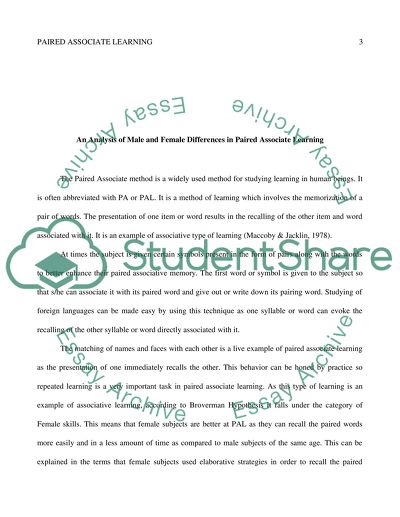Cite this document
(“Male and Female Differences in Paired Associate Learning Term Paper”, n.d.)
Male and Female Differences in Paired Associate Learning Term Paper. Retrieved from https://studentshare.org/psychology/1446584-male-and-female-differences-in-paired-associate
Male and Female Differences in Paired Associate Learning Term Paper. Retrieved from https://studentshare.org/psychology/1446584-male-and-female-differences-in-paired-associate
(Male and Female Differences in Paired Associate Learning Term Paper)
Male and Female Differences in Paired Associate Learning Term Paper. https://studentshare.org/psychology/1446584-male-and-female-differences-in-paired-associate.
Male and Female Differences in Paired Associate Learning Term Paper. https://studentshare.org/psychology/1446584-male-and-female-differences-in-paired-associate.
“Male and Female Differences in Paired Associate Learning Term Paper”, n.d. https://studentshare.org/psychology/1446584-male-and-female-differences-in-paired-associate.


